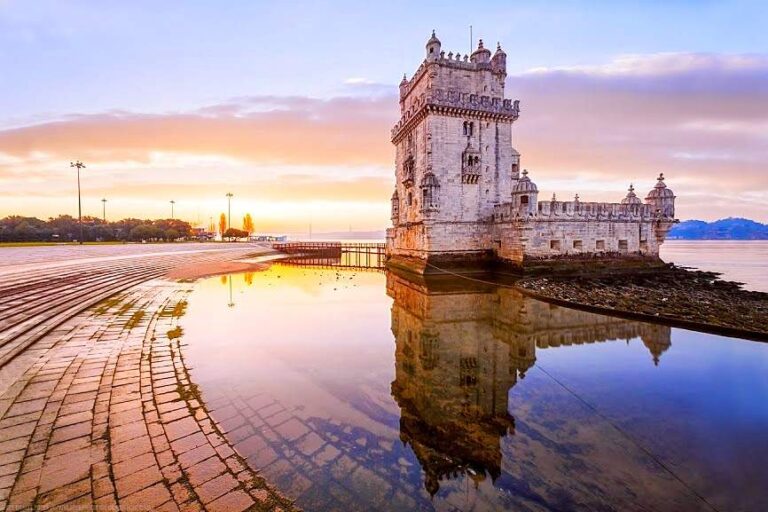Imagine standing on the edge of the Tagus River in Lisbon, gazing upon a structure that has witnessed centuries of Portuguese history. The Belém Tower, also known as the Torre de São Vicente, is more than just a beautiful monument; it’s a testament to Portugal’s Age of Discovery, a symbol of its maritime power, and a masterpiece of Manueline architecture.
Originally built in the 16th century, around 1515, during the reign of King Manuel I, the Belém Tower served a crucial purpose: to defend Lisbon from enemy ships approaching via the Tagus River. Designed by the architect Francisco de Arruda, it was strategically positioned to protect the city’s harbor and marked both the point of departure and the triumphant return of Portuguese explorers setting sail to chart new territories. The tower wasn’t just a defensive structure; it was a powerful statement of Portugal’s global ambitions and its mastery of naval power.
The architecture of the Belém Tower is a captivating blend of styles, primarily showcasing the Portuguese Late Gothic Manueline style. This unique style, prevalent during the Age of Discovery, is characterized by its ornate details, maritime motifs, and symbolic representations of royal power. As you observe the tower, you’ll notice intricate carvings of ropes, knots, and armillary spheres (a symbol of King Manuel I), all meticulously sculpted in the local lioz limestone. The tower also incorporates elements of Moorish influence, particularly evident in its delicate windows and curved balconies, reflecting Portugal’s rich cultural heritage.
The tower itself is divided into two main parts: a rectangular bulwark, which housed the artillery, and a four-story tower rising above it. Each floor served a distinct purpose. The lower levels were used for storage and artillery positions, while the upper floors housed the Governor’s Room, the Kings’ Room, the Audience Room, and a chapel. The terrace at the top offers breathtaking panoramic views of the Tagus River and the surrounding landscape.
Over the centuries, the Belém Tower’s function evolved. It transitioned from a defensive fortress to a customs house, a telegraphic station, and even a lighthouse. For a time, it also served as a prison, holding political prisoners within its walls. Despite these changes in purpose, the tower has remained a constant symbol of Lisbon and Portugal, a reminder of its rich maritime history and its enduring cultural identity.
Today, the Belém Tower stands as a UNESCO World Heritage Site, recognized for its outstanding universal value. Millions of visitors flock to admire its architectural beauty, explore its historical significance, and imagine the countless voyages that began and ended at its shores.
Experience the Belém Tower Virtually with HYR Travel!
Want to explore the intricate details and rich history of the Belém Tower from the comfort of your own home? Discover our immersive Virtual Tour of this iconic landmark on the HYR Travel app! Available for both iOS and Android, HYR Travel brings the majesty of Portuguese history and architecture directly to your fingertips. Download the app today and begin your virtual journey!
The Belém Tower is more than just a monument; it’s a journey through time, a testament to human ingenuity, and a symbol of Portugal’s enduring legacy. Whether you experience it in person or virtually through HYR Travel, it’s a destination that will leave a lasting impression.



